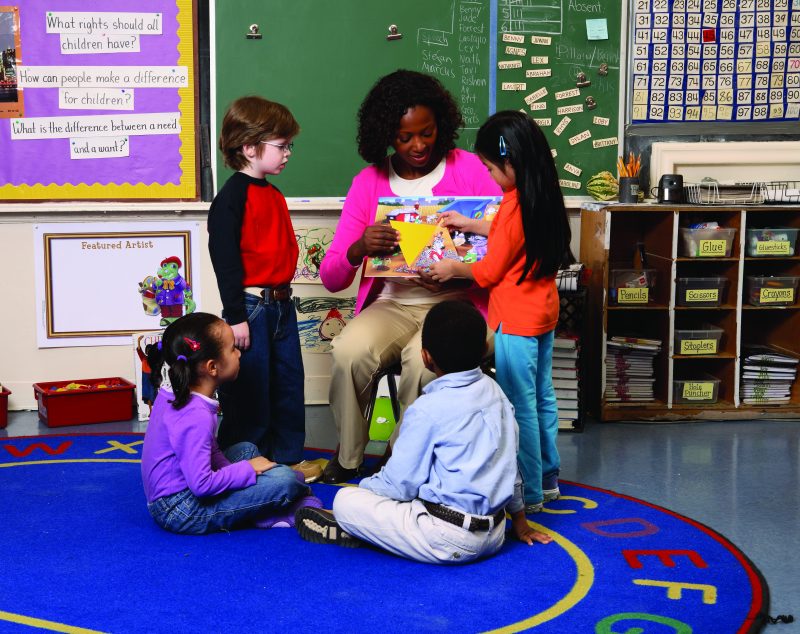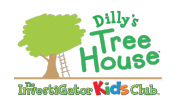
14 Sep 10 signs of a classroom that welcomes ALL children
Children learn in many different ways. Some learn better visually, while others learn better by listening. Other children learn best through movement. Also, many of today’s preschool and kindergarten classrooms include children with special needs. Some children have autism spectrum disorders. Others may have attention deficit disorders that haven’t been diagnosed yet. Or, they may have health issues, communication impairments, or physical disabilities.
If your child has special needs, this inclusive classroom environment is obviously very important. One study has shown that learning alongside typically-developing children actually boosts special-needs children’s learning. This boost can be seen especially in language skills.
But even if you don’t have a special needs child, it’s still important for his classroom to accommodate all types of learners. Teachers that provide a variety of learning activities—through touch, movement, listening, and vision—are meeting the needs of all children, including your own child.
Also, your child can gain important social and emotional skills by learning alongside special needs children. She can learn empathy, kindness, and cooperation, among others. In some inclusive classrooms, children even serve as peer models, modeling appropriate social behavior for their peers.
The idea is that when a typically-developing child talks, plays, and participates in activities appropriately, then a child with special needs will follow by modeling her behavior after her peer’s. For many children, being a peer model boosts their confidence as well as social and emotional skills.
One study by the National Institute for Early Education Research (NIEER) even shows that typically-developing children learn better in an inclusive classroom. In the study, typically-developing children showed even more progress in basic letter and word recognition skills when they learned alongside children with special needs.
How can you tell if your child’s classroom welcomes all children?
Picture his classroom in your mind. What did you notice when you first saw it?
Now, ask yourself some questions.
- Were the walls so covered with posters, charts, and other written materials that it was difficult to focus on one thing?
- Did the room feel cluttered to you?
- Was it hard to walk between chairs, tables, and other furniture?
- Did you see children with mostly the same abilities and ethnicities in the pictures and books displayed?
- Would a child learning to read have a hard time understanding the charts and labels? Do the charts for rules, such as washing hands, include mostly words and few or no visuals?
- Is there no place soft to the touch for a child to relax comfortably?
- If you answered yes to any of these questions, then your child’s classroom might not be a welcoming one.
So, what does a welcoming classroom really look like?
A classroom that welcomes all children usually has 10 basic elements. The 10 signs of an inclusive classroom are:
- art materials, manipulatives, puzzles, and educational toys that are clearly labeled and easily accessible
- books, posters, and other materials that reflect diversity among children, including those with special needs
- chairs or tables that are clearly marked or color coded so children will know where to sit
- different types of activities for visual, auditory, and kinesthetic (movement) learners, including high-interest items for dramatic play, such as telephones or firefighter helmets
- a layout that is easily accessible, with plenty of room to maneuver around
- clearly posted classroom routines and rules, with easy-to-understand visuals
- plenty of seating options for children, such as cushions and both low and high chairs
- an area where children can go to calm down or be soothed, such as a beanbag chair in a corner or a seat near a fish tank
- an up-to-date computer station with appropriate learning programs and technology for all learners
- separate areas for floor play, with no clutter along pathways
You can learn about additional elements of an inclusive classroom by checking out the NAEYC’s Preschool and Kindergarten Inclusion Readiness Checklist.
What if your child’s classroom isn’t a welcoming one? What can you do to make it better?
Unless you’re willing (and able) to change classrooms or schools, there may not be much you can do right away to make your child’s classroom more welcoming. But here are some things you can try.
- Talk to the teacher privately to find out his or her teaching style and the classroom diversity. Be sure to approach the conversation in a respectful, polite way. For example, you might say, “I really want my child to learn how to be accepting of all types of children. If there are special needs children in your classroom, how do you plan to accommodate them?” Listen to what the teacher says and ask more questions if needed. If possible, offer to help make the classroom more welcoming by purchasing or donating materials. Or, you can offer your time to help organize or maintain the classroom.
- Talk to the principal or center director about inclusion in the classroom. Ask what their policies are on including children with special needs. If necessary, mention some of the research on the benefits of an inclusive classroom (check out the study links in this post). Offer your help to make the classroom more welcoming, such as purchasing or donating materials or volunteering your time.
- Find out if your school district (or center) has an inclusion specialist. You can find out by talking to the center director or the special education coordinator in your school district. Then set up a conversation with the specialist. Or, talk to the special education coordinator if there isn’t an inclusion specialist. Ask about inclusion in your child’s classroom. Ask the specialist or coordinator how you can help make the classroom more welcoming.
Does your child’s classroom welcome all types of learners? Or, do you think it needs some improvement? Let us know in the Comments section below. Be sure and include how you can tell that it’s a welcoming classroom or not. Or, add some more signs of a welcoming classroom to the Comments section below.

Fredrika
Posted at 13:47h, 14 OctoberThanks, this site is very helpful.